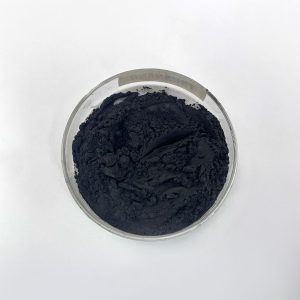1. Introduction
In a major development just 24 hours ago, the U.S. Department of Commerce announced new export controls on high-purity titanium metal powder used in aerospace and defense additive manufacturing, citing national security concerns. This move has sent ripples through global supply chains and reignited interest in alternative sources and powder specifications. Against this backdrop, understanding the nuances of titanium powder—from composition and production to pricing and application—is more crucial than ever for engineers, procurement specialists, and innovators in advanced manufacturing.

2. What Is Titanium Powder?
Titanium powder, often abbreviated as ti powder, refers to finely divided particles of elemental titanium or its alloys. Unlike bulk titanium, which is known for its strength-to-density ratio and corrosion resistance, titanium powder unlocks unique capabilities—especially in powder metallurgy and additive manufacturing. It’s important to distinguish between pure titanium powder and alloyed forms like ti6al4v powder (also called ti64 powder), which contains 6% aluminum and 4% vanadium for enhanced mechanical properties.

3. Production Methods: Gas Atomized vs. HDH
Two dominant methods produce commercial titanium powder: gas atomization and hydride-dehydride (HDH). Gas atomized titanium powder yields spherical particles ideal for smooth powder flow in 3D printing systems. This morphology is essential for consistent layer deposition in titanium powder additive manufacturing. In contrast, HDH titanium powder is irregularly shaped, cheaper to produce, and commonly used in pressing and sintering—but less suitable for high-precision 3D printing.
- Gas atomized powder: spherical, high purity, excellent flowability, preferred for aerospace 3D printing
- HDH powder: angular, lower cost, used in traditional powder metallurgy and chemical applications
4. Key Types of Titanium Powder and Their Uses
Beyond pure titanium powder, several specialized variants serve niche roles. Ti6al4v powder dominates the titanium 3d printing powder market due to its balance of strength, weldability, and biocompatibility—making it ideal for medical implants and jet engine components. Meanwhile, tio2 powder (titanium dioxide) is widely used in pigments, sunscreens, and photocatalysts, though it’s chemically distinct from metallic ti powder.
Other functional powders include titanium nitride powder (hard, gold-colored coating material), titanium carbide powder (extreme hardness for cutting tools), and titanium diboride powder (tib2 powder), valued for its high melting point and electrical conductivity. Note that ‘titanium flash powder’ and ‘burnt titanium powder coat’ are unrelated to industrial metal powders—they refer to pyrotechnic or surface treatment contexts.
5. Pricing Landscape: Titanium vs. Molybdenum vs. Tungsten
The titanium powder price per kg varies significantly by type, purity, and particle size. As of mid-2024, spherical ti6al4v powder for 3d printing costs between $300–$600/kg, while HDH pure titanium powder may be as low as $80–$150/kg. Comparatively, molybdenum powder price hovers around $50–$100/kg for standard grades, and tungsten powder price per kg ranges from $40–$90, depending on density and morphology.
Specialty powders command premiums: titanium nanopowder and tio2 nano powder can exceed $1,000/kg due to complex synthesis. Similarly, tungsten carbide powder price per kg often surpasses $100, especially for fused tungsten carbide used in wear-resistant coatings. Buyers should note that ‘titanium powder for 3d printing price’ includes stringent quality controls—oxygen content, particle size distribution (typically 15–45 µm), and sphericity—which justify the higher cost.
6. Sourcing and Suppliers
When you buy titanium powder, choosing a reputable titanium powder supplier is critical. Leading vendors offer certified materials compliant with ASTM or ISO standards for additive manufacturing. International titanium powder markets are dominated by companies in the U.S., Germany, Japan, and China. Always verify whether the supplier provides gas atomized titanium powder or HDH variants—and whether they stock ti64 powder or pure titanium powder based on your application needs.
For those comparing alternatives, molybdenum powder suppliers and tungsten powder suppliers often serve overlapping industries (e.g., aerospace, electronics). Dry moly powder, molybdenum disulfide powder (mos2 powder), and tungsten disulfide powder (ws2 powder) are common solid lubricants, but they lack the structural utility of titanium metal powder.
7. Safety and Handling Considerations
Titanium dust is flammable and can be pyrophoric in fine particle form—especially below 45 µm. Proper handling in inert atmospheres (argon or nitrogen) is mandatory during 3d printing or storage. This contrasts with tio2 powder, which is generally regarded as safe in consumer products (though nano-forms are under regulatory review). Never confuse titanium metal powder with titanium-coated diamond powder or burnt titanium powder coat—these are entirely different material systems.
8. Conclusion
Titanium powder is far from a commodity—it’s a high-performance enabler of next-generation manufacturing. Whether you’re evaluating titanium powder for sale for medical implants, weighing titanium powder cost against molybdenum metal powder for furnace components, or sourcing spherical tungsten powder for radiation shielding, understanding the distinctions between types, production routes, and pricing drivers is essential. With tightening global regulations and surging demand in additive manufacturing, informed decisions about where to buy titanium powder will define competitive advantage in advanced engineering sectors.
Our Website founded on October 17, 2012, is a high-tech enterprise committed to the research and development, production, processing, sales and technical services of ceramic relative materials such as Titanium. Our products includes but not limited to Boron Carbide Ceramic Products, Boron Nitride Ceramic Products, Silicon Carbide Ceramic Products, Silicon Nitride Ceramic Products, Zirconium Dioxide Ceramic Products, etc. If you are interested, please feel free to contact us.
